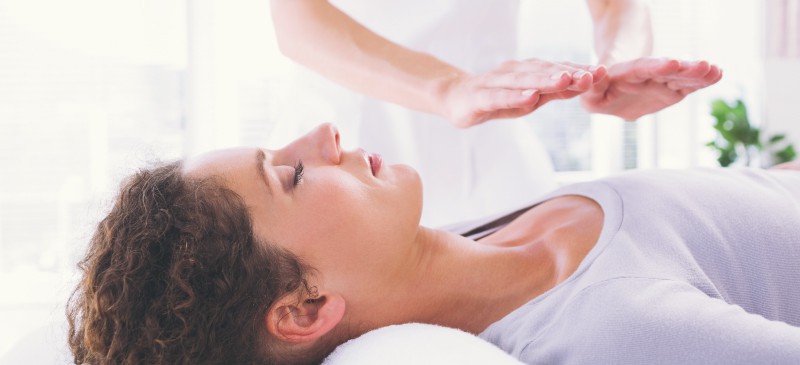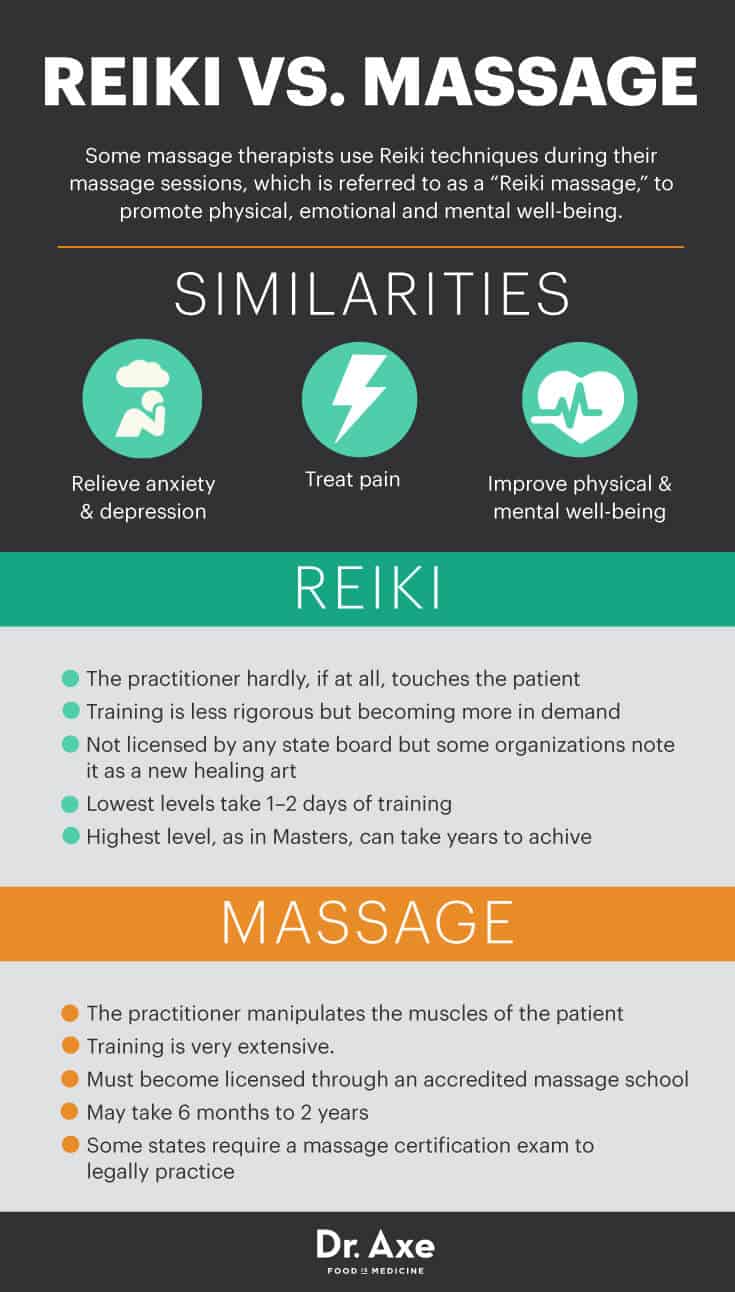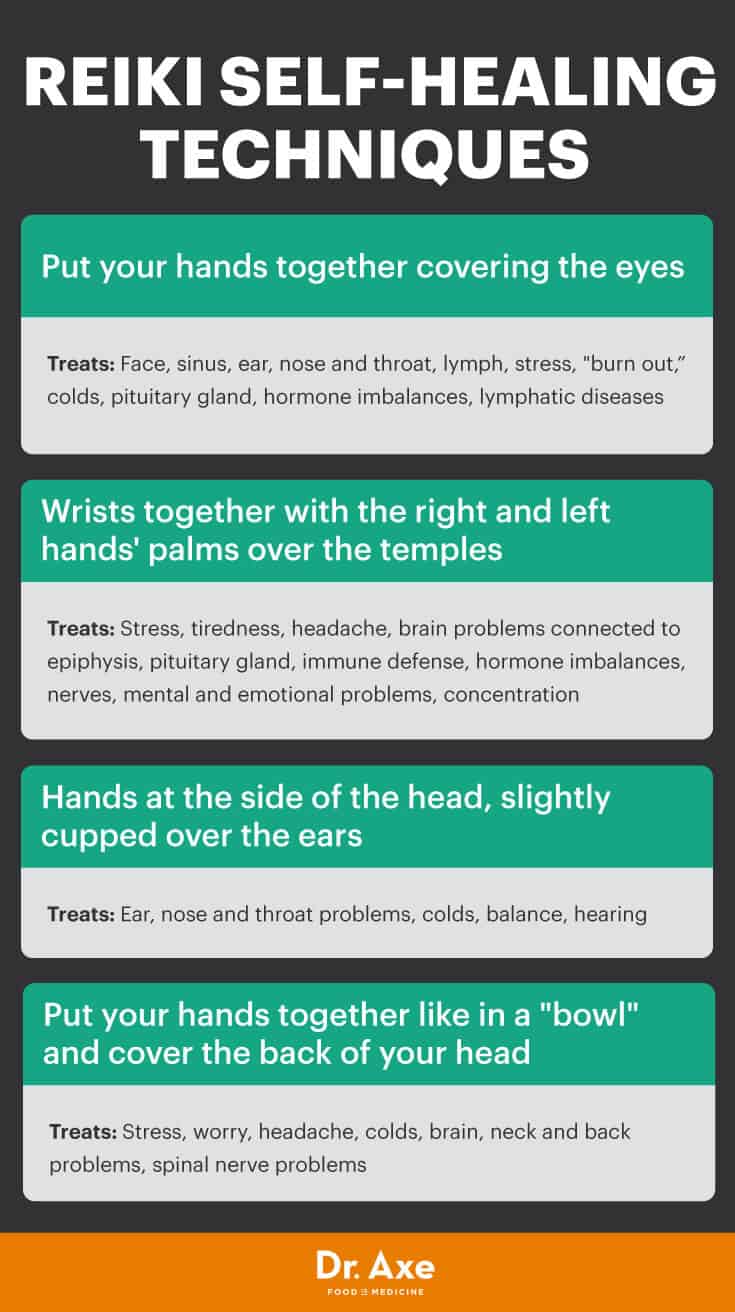This Dr. Axe content is medically reviewed or fact checked to ensure factually accurate information.
With strict editorial sourcing guidelines, we only link to academic research institutions, reputable media sites and, when research is available, medically peer-reviewed studies. Note that the numbers in parentheses (1, 2, etc.) are clickable links to these studies.
The information in our articles is NOT intended to replace a one-on-one relationship with a qualified health care professional and is not intended as medical advice.
This article is based on scientific evidence, written by experts and fact checked by our trained editorial staff. Note that the numbers in parentheses (1, 2, etc.) are clickable links to medically peer-reviewed studies.
Our team includes licensed nutritionists and dietitians, certified health education specialists, as well as certified strength and conditioning specialists, personal trainers and corrective exercise specialists. Our team aims to be not only thorough with its research, but also objective and unbiased.
The information in our articles is NOT intended to replace a one-on-one relationship with a qualified health care professional and is not intended as medical advice.
What Is Reiki … and Can It Really Help Cancer Patients?
August 2, 2018

Everyone is familiar with massage therapy and its healing abilities for both the body and the mind. However, most people probably don’t know that massage therapists use many Reiki techniques in their work. What is Reiki? I’m glad you asked.
Reiki is thought to be a natural application of health in which massage practitioners place their hands lightly on or just above a person to help facilitate the person’s own healing response from within his or her own body. Sounds pretty amazing, doesn’t it? So how does Reiki work, just what is Reiki exactly and how does it actually benefit the body? Let’s find out.
What Is Reiki?
Reiki is based on natural Eastern medicine with the intention of using energy to support the body’s natural healing abilities. Though there isn’t any scientific evidence to support this idea, Reiki has been studied as a healing method for all sorts of pain, anxiety, fatigue and depression. In fact, it’s been used in at least 76 hospitals, medical clinics and hospice programs as a standard part of health care. (1)
Reiki originated in Japan with the meaning of universal life energy. The technique is based on the principle that the practitioner can channel energy into the patient by means of light touch or sort of hovering of the hands to then activate the natural healing processes of the patient’s body and restore physical and emotional well-being.
The Reiki technique is designed to help relieve stress and promote relaxation. The intention is that by “laying on hands,” a “life force energy” will flow through us, giving us life. If your “life force energy” is low, you’re likely to be more susceptible to illness and stress. However, if it’s high, the body will feel a happy and healthy energy that instills a more positive well-being.
You have probably heard of how positive thoughts yield positive results. It’s similar to that concept.
Related: Benefits of Humanistic Therapy + How It Works
Benefits of Reiki
1. Helps Cancer Patients
One of the most stressful symptoms in pediatric oncology patients is cancer-related fatigue. The intention of a study, published in the European Journal of Cancer Care, was to evaluate intervention using natural methods to help manage fatigue and psychological stress in patients with cancer.
The study reviewed physical exercise, healing touch, music therapy, therapeutic massage, nursing interventions and health education methods of healing. Several showed that they helped reduce fatigue and stress levels. These methods may be complementary to conventional treatments and, perhaps over time, may help reduce psychological stress. (3)
Further studies have shown that, in addition to promoting relaxation among patients, Reiki can also be used to encourage healing and provide other benefits, and it may be a great option while undergoing other traditional treatments. As a natural cancer treatment, it helps promote positive thoughts regarding healing and reduces stresses cancer can cause. (4, 5)
2. May Treat Complex Regional Pain Syndrome Type I in Children
Complex regional pain syndrome type I (CRPSI) is known as reflex sympathetic dystrophy syndrome and typically occurs after an illness or injury of a limb that did not receive nerve damage. About 90 percent of people with complex regional pain syndrome have type 1. CRPSI can be disabling, especially in children.
Studies indicate that patients who were instructed to self-administer massage experienced no or little pain. In particular, research from the University of Iowa’s Department of Orthopaedic Surgery and Rehabilitation found that further administration of light-touch therapies could have a significant effect, be risk-free and a more inexpensive approach to managing CRPSI. One thing that’s important to note is that often patients become highly dependent on others for therapy. However, with Rieki, it’s possible to self-administer with proper training. (6, 7)
3. Aids in Dementia Management
There are relationships between dementia and impairments in hearing, vision, smell and even taste that have been identified. Because our senses play a huge role in our memory and day-to-day function, the disturbance of them causes a major imbalance in the body and life that adds a lot of stress.
When our sense of smell is impaired, for instance, research has shown symptoms that may start as a mild cognitive impairment may lead to Alzheimer’s disease with 85.2 percent sensitivity rates. As our cognitive function deteriorates, it greatly affects how we live in our environment, and because anyone living with dementia is typically very sensitive to experiences observed through the senses, it’s crucial that the environment be managed carefully so it’s as understandable, comfortable and even therapeutic as possible.
Studies have shown that various therapies can help bring a balance through rhythm. Music therapy, aromatherapy, massage and multisensory stimulation are recommended by the National Institute for Health Care Management (NICE) for the management of symptoms of dementia. NICE suggests that these sensory-type therapeutic mechanisms are probably going to play a greater role in dementia health care in the future, which is very good news. (8)

4. Helps Promote Mental and Physical Well-Being in Infants
Infant massage is becoming a more sought-after natural treatment for healthy development in babies. It’s been reported that massage provides many benefits, such as better sleep, improved breathing patterns, regular pooping, less colic and gas, and improved growth. Infant massage may help reduce infant stress and provide a healthy environment for parent-infant interaction and relationship building.
Though more studies need to be conducted, there were positive results in terms of time spent upset, crying, fussing, decreased levels of blood bilirubin and fewer cases of diarrhea in research conducted by Plymouth University Peninsula Schools of Medicine and Dentistry in the U.K. on the effects of infant massage. Because babies are more open to energy flow, they’re very receptive to energy types of therapy. A short Reiki session of about 10 to 20 minutes, depending on the baby’s circumstances, may be all that’s needed for positive results and to help mom and dad get a good night of sleep. (9, 10)
5. Relieves Anxiety and Depression
UCLA reported on studies stating that Reiki treatments, when conducted on stress-induced subjects, not only showed a significant decrease in stress, but also in anxiety and depression. In addition, further testing in another study showed that Reiki treatments were useful in reducing pain. (11)
How Does Reiki Help the Body?
Reiki is described as coming from a holistic perspective. What that means is that the general health of the body, as a whole, is in balance and able to maintain that balance because it’s very resilient. The thought is that a healthy person can handle day-to-day stress because of this holistic approach to living.
This mode of resilience is known as homeostasis with internal bodily conditions able to remain stable and somewhat constant. Some examples of homeostasis include the regulation of temperature and the balance between acidity and alkalinity, or the body’s pH levels. Reiki is thought to help provide human homeostasis through the stability of body’s internal environment in response to surrounding environmental changes.
Because stress, including anything from emotional stress to physical or financial stress, affects the natural balance of the body and the body’s ability to restore homeostasis, it’s critical to address it sooner than later. So, yes, Reiki may help prevent a decline in your health and well-being because it lessens the impact by releasing tension from the body, helping move you toward your own unique balance in mind, body and spirit. When this happens, our bodies function more effectively.
Studies were conducted by the School of Mind-Body Medicine at Saybrook University in San Francisco and the Department of Psychology at Loyal University in New Orleans to review the effects of massage by observing massage therapist techniques. Real massage sessions were videotaped, and participants were interviewed immediately after as they viewed the video.
The massage therapists discussed the characteristics that they typically focus on during their work, which included safe touch, and that their work affects multiple bodily systems. Ultimately, while the massage therapists felt that their work was a biomechanical intervention, they understood therapeutic massage as serving multiple functions resulting in an intentionally holistic approach. (12)
Though more research is needed, more and more evidence points to the positive effects of Reiki, such as lowered heart rate, blood pressure and stress hormones, as well as increased immune strength. It’s the positive response to Reiki that suggests how stress responds to relaxation so the body can use its own healing mechanisms.
Theories present Reiki’s physical, mental, emotional and spiritual healing effect as being prompted on a “subphysical level, perhaps in what science refers to as the biofield… The biofield is the term medical science has adopted for the intricately layered vibrational energy field that is said to surround and penetrate the physical body. For thousands of years, traditional, indigenous, pre-scientific medical systems have recognized a balanced, evenly pulsing biofield as the foundation of health and wellbeing.” (13)
If this balance is disrupted, it may cause illness of some sort. There are tons of therapies that focus on the restoration of this lack of balance through such methods as acupuncture, qigong, shiatsu, meditation and yoga, in addition to Reiki.
Related: How Energy Healing Works to Benefit the Body & Mind
Reiki vs. Massage
As you’ve undoubtedly noticed, there are many references to massage therapy in this discussion about what is Reiki. That’s because massage uses many principles and even techniques of Reiki. However, there are some definitive differences between the two. (14)
Reiki:
- The practitioner hardly, if at all, touches the patient.
- Training is less rigorous but becoming more in demand.
- It’s not licensed by any state board, but there are some organizations that are noting it as a new healing art.
- The Reiki Licensing Commission for Reiki Masters and Healers is calling for more strict standards of training and awards designations for Reiki healers, coaches, masters and instructors.
- The lowest levels take about one or two days of training.
- The highest level, as in Masters, can take years to achieve.
Massage Therapy:
- The practitioner manipulates the muscles of the patient.
- Training is very extensive.
- You must become licensed through an accredited massage school, and coursework includes anatomy, physiology and various massage techniques.
- It may take six months to two years of training.
- Some states require a massage certification exam to legally practice.
- Some massage therapists use Reiki techniques during their massage sessions, which is referred to as a “Reiki massage,” to promote physical, emotional and mental well-being.
Reiki Healing Techniques
Reiki can be performed through self-healing techniques or through a Reiki professional. It’s probably best to experience the support of a professional who can teach you the right methods for self-application. Through Reiki healing techniques, you may experience improvement with numerous physical issues throughout the body, such as the eyes, sinuses, respiratory issues, the brain, the heart and the thyroid. The concept is that the internal energy that’s available from within the body can be applied to heal you, regardless of the ailment.
Here are a few Reiki self-healing techniques: (15)
- Head 1: Put your hands together covering the eyes. Treats: Third eye chakra — face, sinus, ear, nose and throat, lymph, stress, “burn out,” colds, pituitary gland, hormone imbalances, all kinds of lymphatic diseases
- Head 2: Wrists together with the right and left hands’ palms over the temples. Treats: Stress, tiredness, headache, brain problems connected to epiphysis, pituitary gland, immune defense, hormone imbalances, nerves, mental and emotional problems, concentration, etc.
- Head 3: Hands at the side of the head, slightly cupped over the ears. Treats: Ear, nose and throat problems; colds; balance; hearing. The ears have many points used in acupuncture, and these points affect a variety of problems.
- Head 4: Put your hands together like in a “bowl” and cover the back of your head. Treats: Stress; worry; headache; colds; brain, neck and back problems; spinal nerve problems

Here’s how to provide Reiki treatment to others:
- Head 1: Put your hands together with the thumbs touching at the base of the nose. Do not allow your hands to touch the eyes. If your hands tend to sweat, you may want to put a cloth or paper tissue above the eyes. Treats: Third eye chakra — face, sinus, ear, nose and throat, lymph, stress, “burn out,” colds, pituitary gland, hormone imbalances and all kinds of lymphatic diseases
- Head 2: Put wrists together with the fingers of the right and left hands over the temples. Treats: Stress, tiredness, headache, brain problems connected to epiphysis, pituitary gland, immune defense, hormone imbalances, nerves, mental and emotional problems, concentration, etc.
- Head 3: Hands at the side of the head, slightly cupped over the ears. Treats: Ear, nose and throat problems; colds; balance; hearing. The ears have many points used in acupuncture and affect a variety of problems.
- Head 4: Put your hands together and slide them under the head so it lies in the “bowl” of your hands. Treats: Stress; worry; headache; colds; brain, neck and back problems; spinal nerve problems
History of Reiki
A man named Mikao Usui is believed to have rediscovered this root system that we call Reiki. It’s tradition that there are grandmasters of Reiki who have practiced for a very long time. And though Reiki comes in many forms today, the Usui System of Natural Healing is most popular.
Usui studied in a Tendai Buddhist monastery school when he was very young and traveled to western countries and China often so he could learn their practices. Usai probably integrated many ideas, both spiritual and physical, to complete the Reiki technique. He opened a school in Harajuku Tokyo in 1922 and developed a book named “The Original Reiki Handbook of Dr. Mikao Usui.” We think that Usui taught the Reiki technique to about 2,000 people with only about 17 persons noted as true Reiki Masters.
Dr. Usui died, but a man named Chujiro Hayashi was well underway in his Reiki training with Usui. We think he may have been one of the last Reiki Masters trained by Usui. Furthermore, Hayashi ended up training a woman named Mrs. Hawayo Takata because of her devotion to Reiki through her own healing when she became very sick. She was the 13th and last Reiki Master who was brought into the practice by Dr. Hayashi. Since Mrs. Takata received this recognition, Reiki has grown throughout the West and East and is practiced throughout all parts of the world today. In fact, there are thousands of Reiki Masters and millions of people who now practice.
Precautions
While reiki appears to be generally safe and can potentially be beneficially incorporated into an integrative health approach, it should not be used to replace conventional care or to postpone a visit to your doctor. Make sure to let your doctor know of any additional methods that you may be practicing for your health care.
Final Thoughts
- What is Reiki? It’s thought to be a natural application of health in which massage practitioners place their hands lightly on or just above a person to help facilitate the person’s own healing response from within his or her own body.
- It originated in Japan with the meaning of universal life energy. The technique is based on the principle that the therapist can channel energy into the patient by means of light touch or sort of hovering of the hands to then activate the natural healing processes of the patient’s body and restore physical and emotional well-being.
- Reiki is thought to help provide human homeostasis through the stability of body’s internal environment in response to surrounding environmental changes.
- It’s been shown to help cancer patients, potentially treat complex regional pain syndrome type I in children, aid in dementia management, promote mental and physical well-being in infants, and relieve anxiety and depression.
- Though more research is needed, more and more evidence points to the positive effects of Reiki, such as lowered heart rate, blood pressure and stress hormones, as well as increased immune strength. It’s the positive response to Reiki that suggests how stress responds to relaxation so the body can use its own healing mechanisms.
- Reiki can be performed through self-healing techniques or through an appointment with a Reiki professional. It’s probably best to experience the support of a professional who can teach you the right methods for self-application. Reiki is also sometimes practiced in clinical settings.












